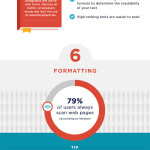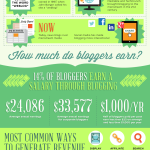Since the rise of big data and advanced, AI-based analysis, businesses have relied more on data to make critical decisions. Data-driven decisions are known to be more reliable, especially now that there are plenty of data sources to tap into. The use of Artificial Intelligence or AI in data processing and analysis also enables more thorough analysis of a bigger and more comprehensive datasets.
Data visualization is the other half of that equation. Through visualization, even the most complex data can be made easy to read and understand. What is data visualization exactly and why does it matter? We are going to find out in this article.
What is Data Visualization?
As mentioned earlier, data visualization is the process of converting complex data into visuals that are easier to understand. Instead of going through pages of processed data, decision makers can get a clear picture of the situation from a glimpse of charts and other visual elements representing the data.
There are other things that data visualization enables. For starters, through the use of matrixes and diagrams, complex data can be made clearer, especially when assessing causality and the relationship of different factors. Data visualization enables a multidimensional view of the situation while keeping everything simple.
That multidimensional approach also brings one extra benefit: the ability to identify key areas that need to be improved. Using multidimensional visuals, decision makers can place relevant factors and instantly see the relationships between them.
Why Does Data Visualization Matter?
From the previous explanation, it is easy to see the main goal of data visualization: simplifying complex data into something that is easy to read and understand. In a world where executives are required to make quick decisions to cope with market challenges, having simplified data is a huge plus.
Data visualization also works great in explaining relationships between relevant factors. When trying to identify market segments in which your products aren’t performing very well, for example, seeing visual representations of the factors is much easier than combing through spreadsheets and sales reports.
There is one other reason why data visualization matters, and that is the size of the data itself. With big data sitting at the heart of decision making process for many businesses, the ability to simplify information is invaluable.
Data Visualization for Everyone
You don’t have to be a big corporation to benefit from data visualization. The very nature of data visualization means it can be implemented in various situations and still be incredibly effective in helping with data analysis. It is also simple enough for most users, adding a touch of flexibility to the mix.
Let’s not forget that the business intelligence software leaders like Microsoft and Tableau Software are offering better, more advanced data visualization features to their users. The advanced features are designed to automate the majority of the visualization processes, giving you more time and resources to focus on understanding the information and making accurate, data-driven decisions.
With many advantages to offer and easy access to the best visualization tools, there is no reason why data visualization should not be a part of your workflow. Start utilizing visualization today and amplify your business’s ability to adapt to changes and challenges.

![WebMeUp All-in-one Web Based SEO Tool [Review Update]](https://www.iblogzone.com/wp-content/uploads/2014/03/WebMeUp-Backlink-Tool-1-150x150.jpg)





![PikToChart: Create Professional Looking Infographics The Easy Way [giveaway]](https://www.iblogzone.com/wp-content/uploads/2013/08/piktochart-infographic-themes-150x150.jpg)
